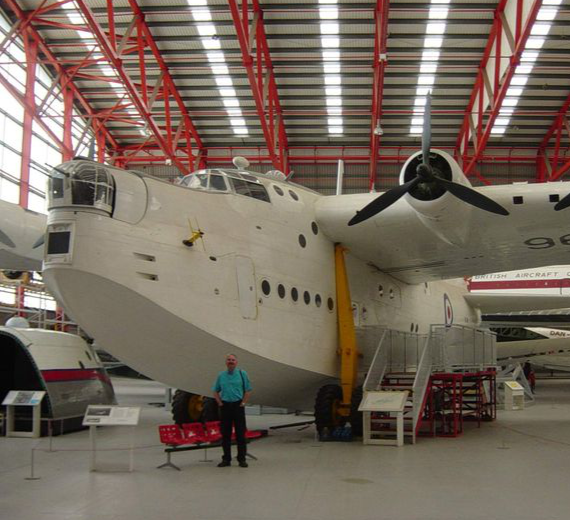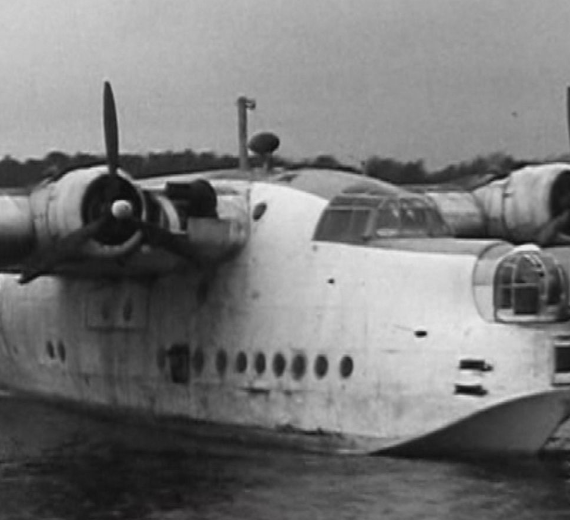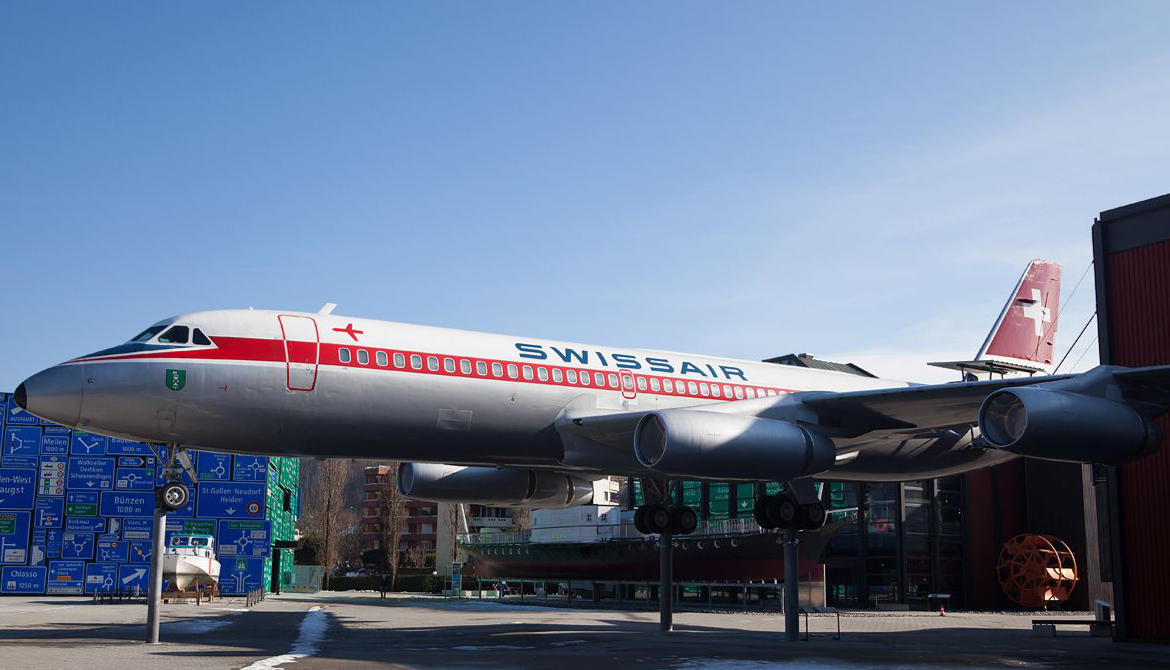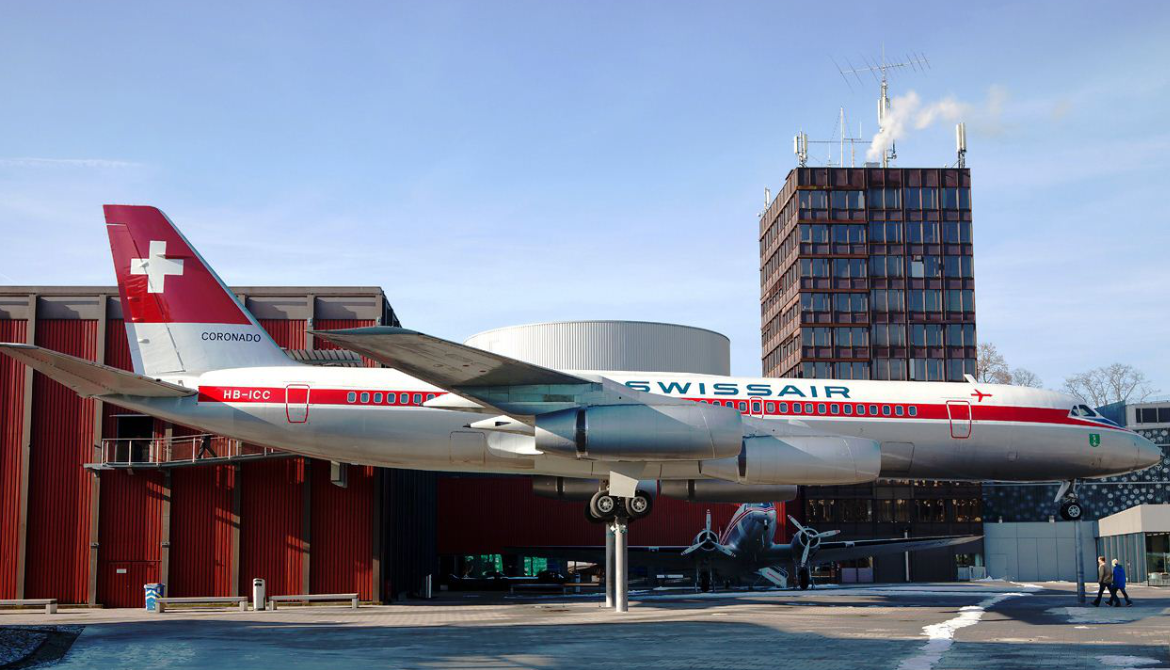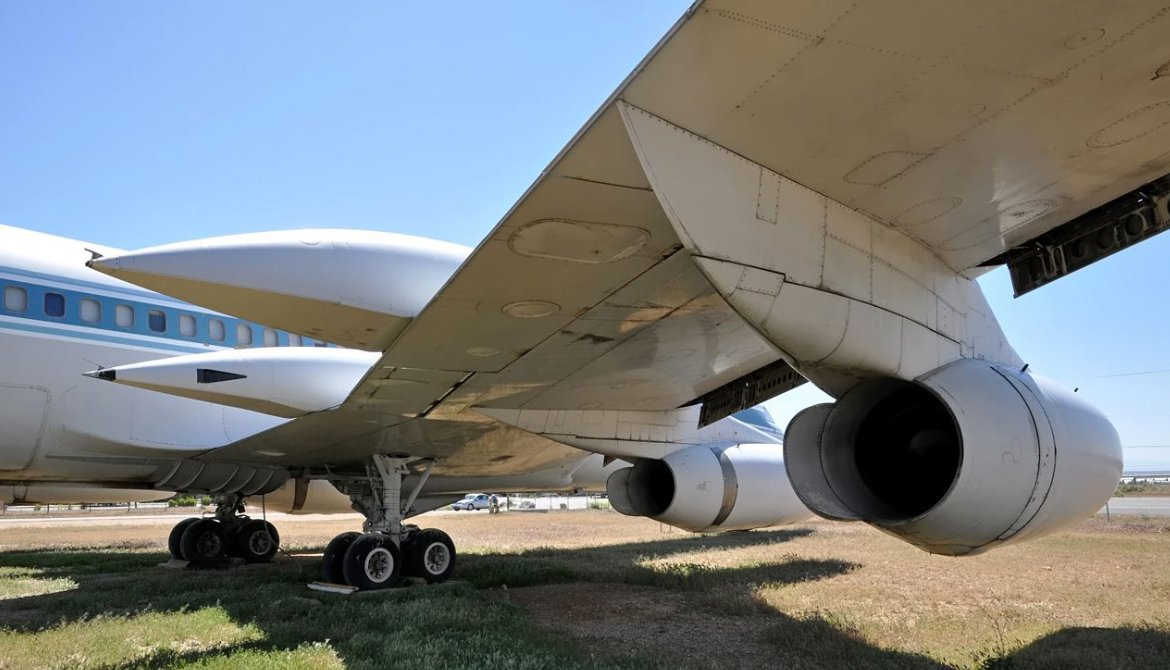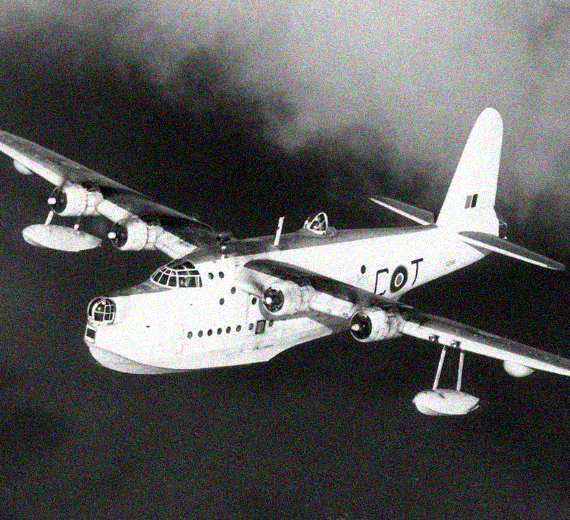Short Brothers plc. Short S.25 Sunderland
Role Military flying boat bomber
Manufacturer Short Brothers
Designer Arthur Gouge
First flight 16 October 1937
Introduction 1938
Retired RAF: 1959
RNZAF: 1967
Status Retired
Primary users Royal Air Force
French Navy
Royal Australian Air Force
South African Air Force
Royal New Zealand Air Force
Produced 1938–1946
Number built 749
Variants Short Sandringham
Short Seaford
.
History Short Brothers plc,
Short S.25 Sunderland

The Short S.25 Sunderland is a British flying boat patrol bomber, developed and constructed by Short Brothers for the Royal Air Force (RAF). The aircraft took its service name from the town (latterly, city) and port of Sunderland in North East England.
Developed in parallel with the civilian S.23 Empire flying boat, the flagship of Imperial Airways, the Sunderland was developed specifically to conform to the requirements of British Air Ministry Specification R.2/33 for a long-range patrol/reconnaissance flying boat to serve with the Royal Air Force (RAF). As designed, it served as a successor to the earlier Short Sarafand flying boat. Sharing several similarities with the S.23, it featured a more advanced aerodynamic hull and was outfitted with various offensive and defensive armaments, including machine gun turrets, bombs, aerial mines, and depth charges. The Sunderland was powered by four Bristol Pegasus XVIII radial engines and was outfitted with various detection equipment to aid combat operations, including the Leigh searchlight, the ASV Mark II and ASV Mark III radar units, and an astrodome.
Design overview


The Short S.25 Sunderland was a large four-engined flying boat developed for military use. The design of the S.25 shared much in common with the civil-orientated S.23, principally differing in its use of a deeper hull profile. As with the S.23, the interior of the Sunderland's fuselage contained two individual decks; the lower deck contained a total of six bunks, along with a galley outfitted with a twin kerosene pressure stove, a yacht-style porcelain flush toilet, an anchoring winch, and a small machine shop for performing inflight repairs. The crew was originally intended to total seven members; this was subsequently increased for later versions of the Sunderland to around 11 crew members and sometimes greater, dependent upon the specific mission being undertaken.
The Sunderland featured all-metal, mainly flush-riveted construction, except for the flight control surfaces, which used a fabric-covered metal frame construction. Of these, the flaps employed unusual Gouge-patented devices that slid backwards along curved tracks, moving rearwards and downwards to increase the wing area and generating 30% greater lift for landing. The thick wings, upon which the aircraft's four nacelle-mounted Bristol Pegasus XXII radial engines were carried, also accommodated a total of six drum-style fuel tanks, which possessed a total capacity of 9,200 litres (2,025 Imperial gallons, 2,430 U.S. gallons). In addition to the main fuel tanks, an arrangement of four smaller fuel tanks was installed behind the rear wing spar later on; with the extra tanks fitted, the Sunderland possessed a combined total fuel capacity of 11,602 litres (2,550 Imperial gallons, 3,037 U.S. gallons), which was enough to enable the type to conduct eight- to 14-hour patrols.
0
KmCeiling
0
KmCombat RANGE
0
Km/hAircraft Speed
0
Max Crew
Photo Gallery
Short Brothers plc,
Short S.25 Sunderland


General characteristics
- Crew: 9–11 (two pilots, radio operator, navigator, engineer, bomb-aimer, three to five gunners)
- Length: 85 ft 4 in (26.01 m)
- Wingspan: 112 ft 9.5 in (34.379 m)
- Height: 32 ft 10.5 in (10.020 m)
- Wing area: 1,487 sq ft (138.1 m2)
Powerplant
- Empty weight: 34,500 lb (15,649 kg)
- Gross weight: 58,000 lb (26,308 kg)
- Powerplant: 4 × Bristol Pegasus XVIII 9-cylinder air-cooled radial piston engines, 1,065 hp each
- Propellers: 3-bladed de Havilland constant-speed propellers, 12 ft 9 in (3.89 m) diameter
Specifications
- Maximum speed: 210 mph (340 km/h, 180 kn) at 6,500 ft (2,000 m)
- Cruise speed: 178 mph (286 km/h, 155 kn) at 5,000 ft (1,500 m)
- Range: 1,780 mi (2,860 km, 1,550 nmi)
- Endurance: around 13 hours
- Service ceiling: 17,200 ft (5,200 m)
- Rate of climb: 720 ft/min (3.7 m/s)
Armament
-
Guns:
- up to 12 × 0.303 in (7.7 mm) Browning machine guns – two fixed on each side of the nose firing forwards (often removed), two in a Nash & Thompson FN.11 nose turret, four in an FN.4a tail turret (which doubled the ammunition capacity of the earlier FN.13),
- On some aircraft Browning 0.5 in (12.7 mm) machine guns replaced the fixed forward firing .303s.
- Bombs: up to 2,000 lb (910 kg) of bombs, mines and depth charges internally, winched out under the wings through hatches in the fuselage sides
-
.
Links to Youtube & Others
At the war's end BOAC obtained more Mark IIIs and gradually came up with better accommodation for its passengers, in three configurations. Bench seats were removed, and civil-standard seating installed.
Short Brothers
Short S.25 Sunderland
Sunderland T9044 was discovered on the seabed off Pembroke Dock in Wales in 2000.[51] The site is protected and recovery of the aircraft is ongoing
Youtube Link
The 990 did not meet the specifications promised, and American Airlines reduced its order as a result.
